Dancing with a Crane, and 5 Tips for Watching Cranes
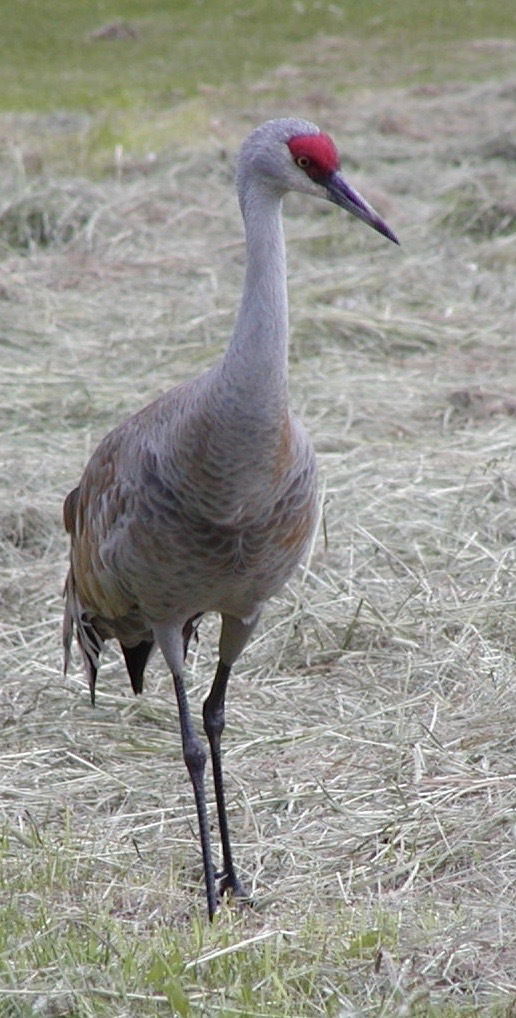
My wedding celebration with Barry in 2003 was attended by sandhill cranes, and a flock of friends. The ceremony took place in a field in Homer Alaska with a backdrop of sea, mountains and glaciers. Homer’s Kachemak Bay is a romantic destination, not only for humans, but also for sandhill cranes. This is one of the storybook locales where they court, nest, and raise their one or two long-legged colts (baby cranes) that emerge from pale brown-speckled eggs. 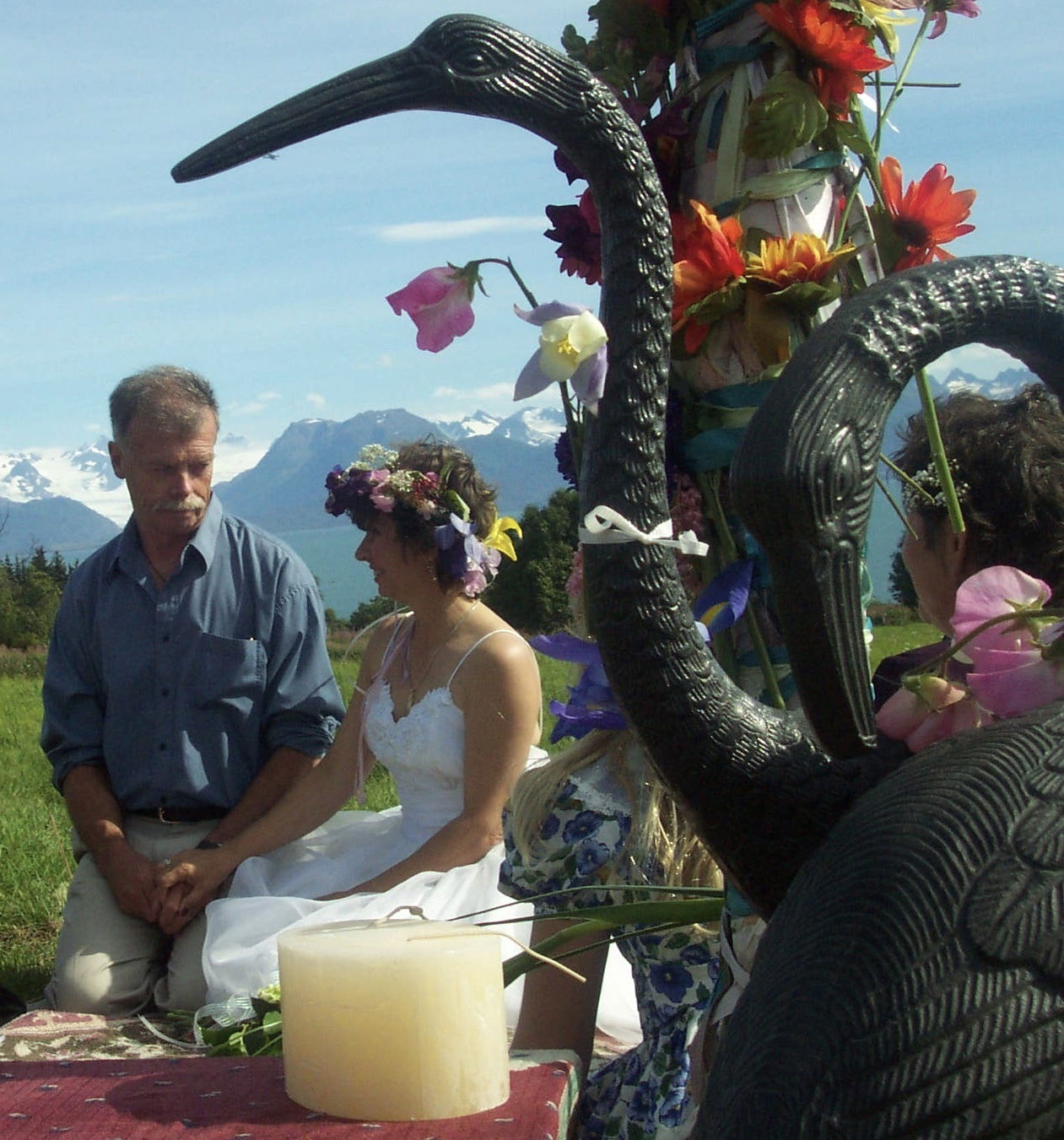
Cranes are the perfect model for harmonious human relationship. They mate for life. The male and female share equal responsibility for incubating, feeding, and guarding the young.

The crane family stays together, plays together and even migrates as a unit. During the return spring migration, the mature colts separate from their parents.
Five tips for viewing sandhill cranes:
- Go blind. Hiding behind a blind, constructed of natural materials, allows you to watch without impacting the bird’s behavior. In the photo, Mavis Muller hides behind a blind constructed in the field outside her front door.
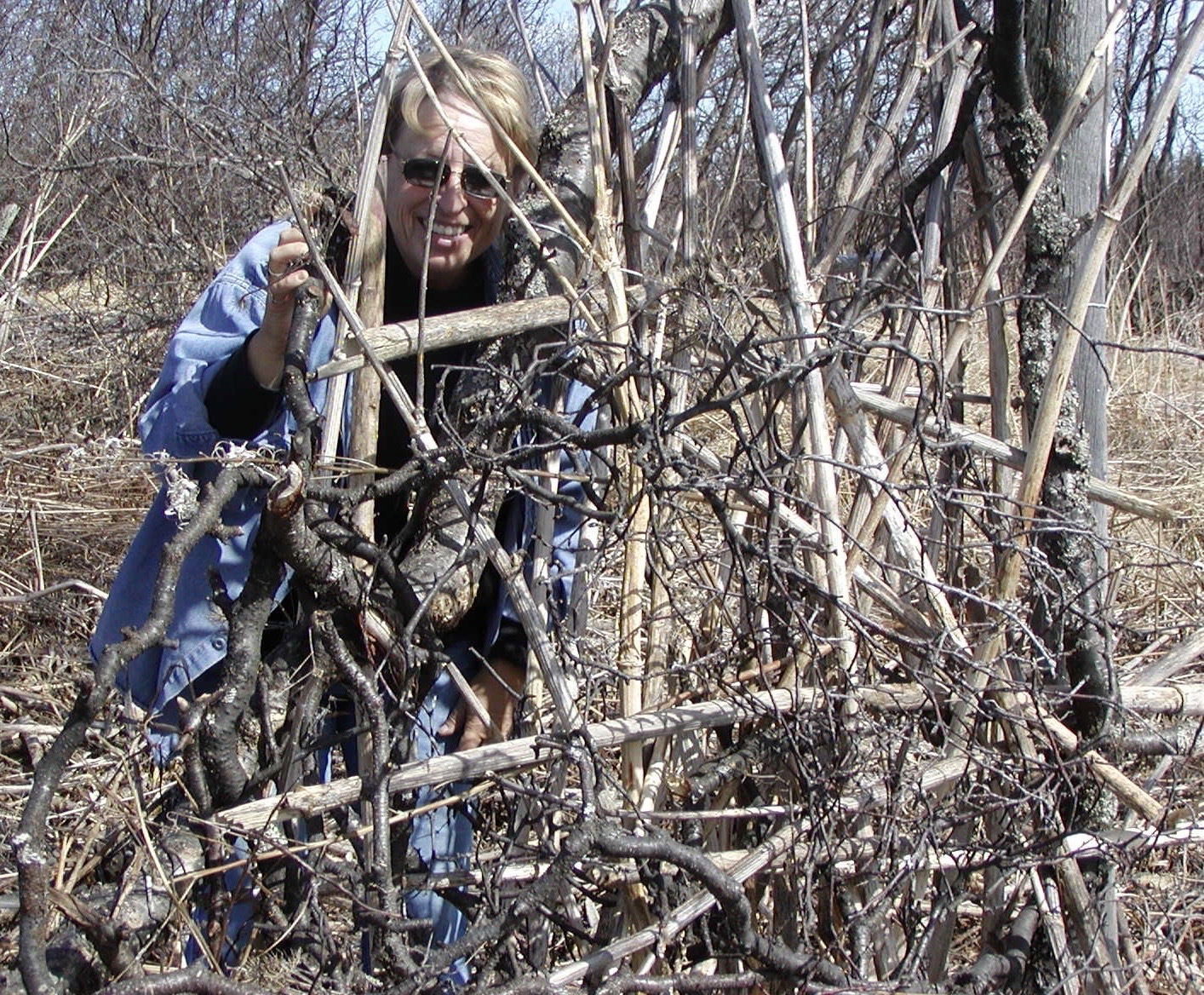
- Keep your Distance. Use telephoto lenses for photographing. Retreat if you notice any signs of distress from the birds.
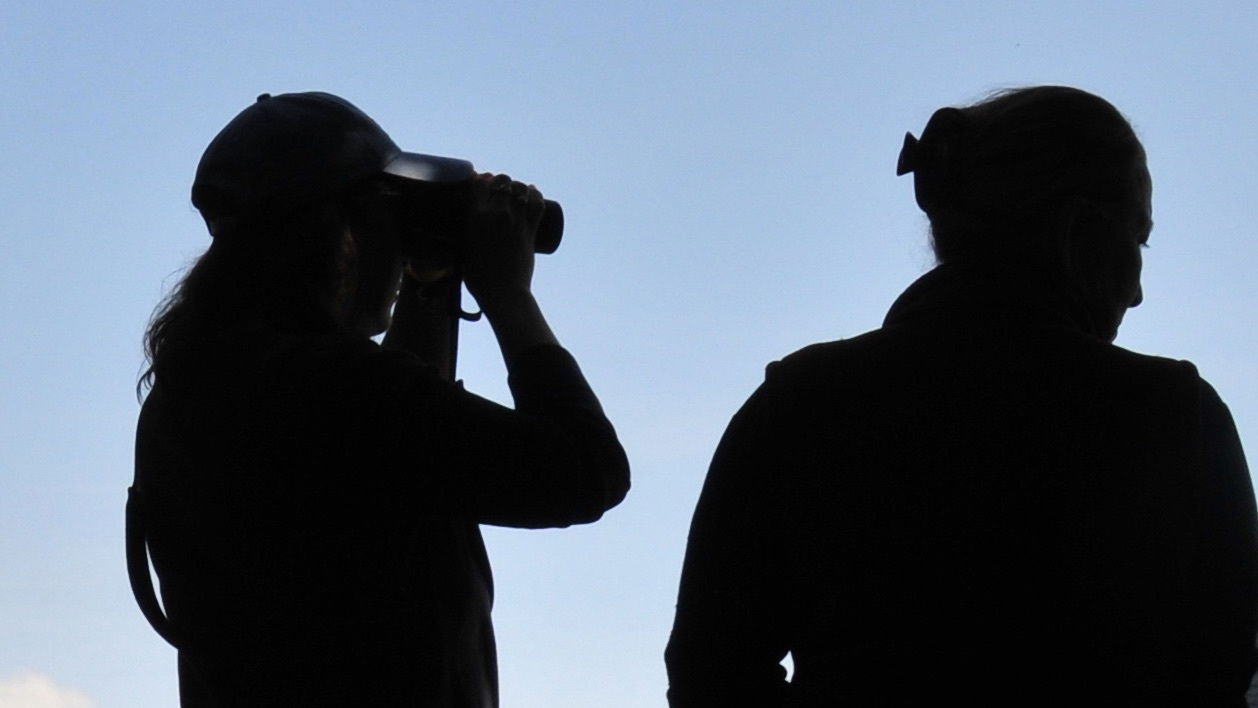
- Right place, right time. To watch cranes, you have to be in their hangouts. In Homer Alaska, starting in mid-April, Sandhills congregate both in fields along Kachemak Bay, as well as atop Skyline Drive and Diamond Ridge. They are often seen in people’s yards in town. Check out Kachemak Crane Watch on the web. The Hayflats in Palmer Alaska, Creamer’s Field in Fairbanks and Saunder’s Field in Trapper’s Creek are other hotspots for cranewatchers. Like many human retirees, the cranes flock south to the ‘snowbird’ states of Florida, New Mexico, and Mississipi, as well as Mexico and Cuba. In mid-February to mid-April, cranes head north for breeding and feeding. On route, over 75% of sandhill cranes (approximately 500,000 birds) pass through Nebraska and gather by the Platte River. Their destination is northern USA, Alaska, Canada and Siberia .
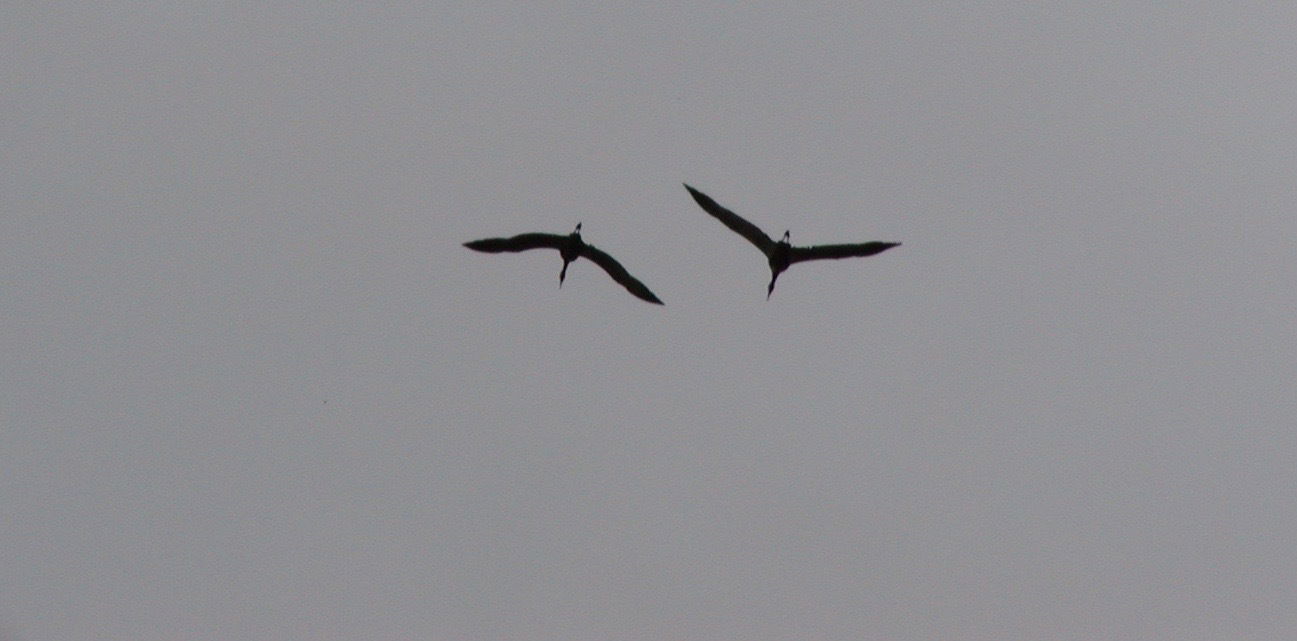
- Know your bird. Understanding the sandhill crane habits, nesting places, and life cycle adds depth to your birdwatching experience. Some birdwatchers enjoy ‘ticking’ as many bird species as they can, and bragging about their life lists. (I knew one man that did likewise, in regards to past partners.) That’s one method. I prefer less birds, more intimacy. For in-depth relationship, hang out in crane places and with crane people.
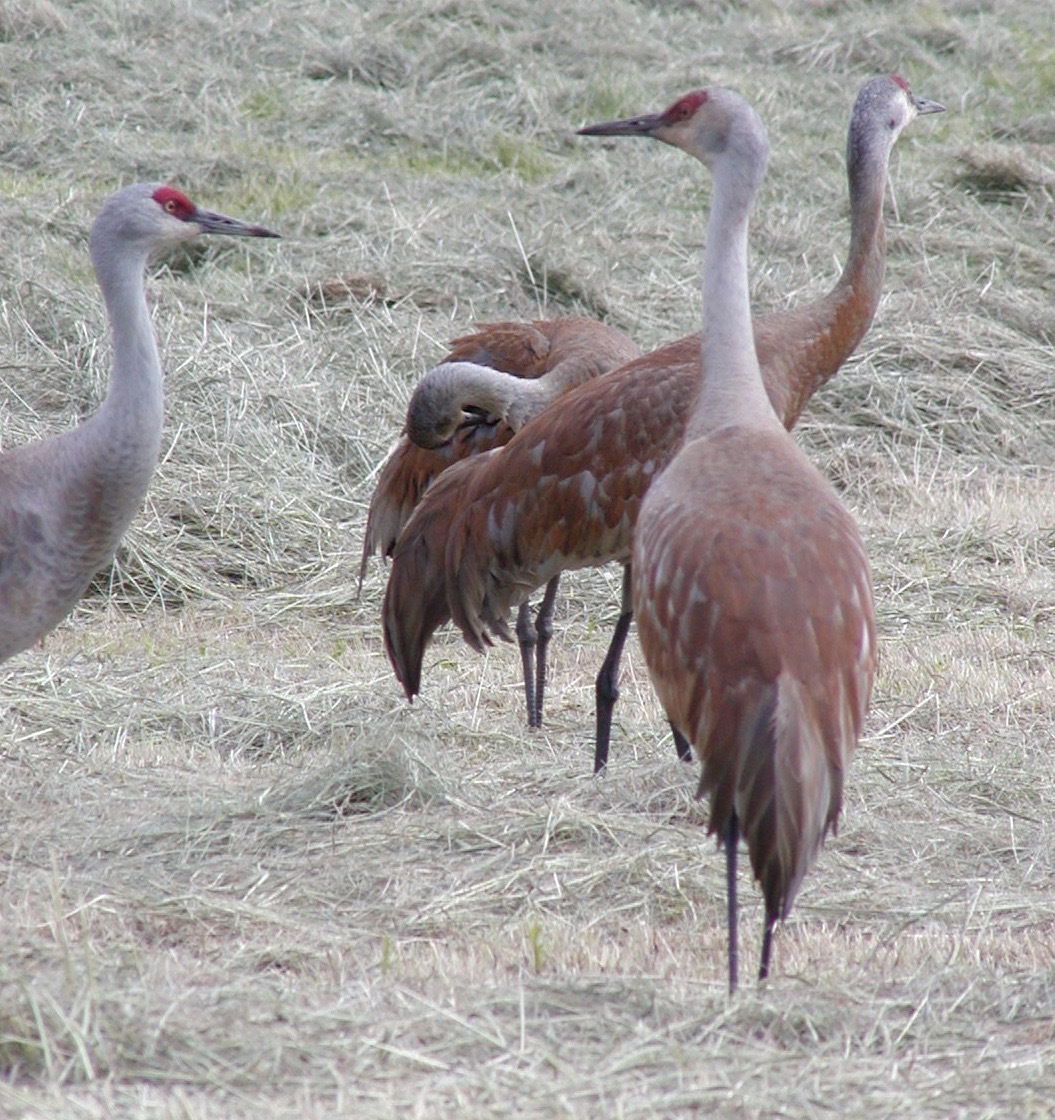
- Listen. Birds have many voices. Calls of distress. Calls of contentment. Calls to attract a mate. Learn to distinguish the subtle and not-so-subtle differences between their soundings. Listen too — if you are so inclined— to parallels between the activities of the cranes and your own life happenings. One of my treasures is are Crane Teachings by Mavis Muller— a meditative tool for reflecting on events in your life and parallels to the life cycles of the cranes.
Sometime cranes are injured by dogs or predators, or for some other reason are unable to be returned to the wild. Sandy, the dancing crane in the video, was rescued by Alaska Bird Center of Houston, Alaska and given to Andrea Weimar to caretake. Living with a crane is a major responsibility, as cranes in captivity have been known to live up to eighty years. (In the wild, a life span of two to three decades is normal.) Cranes are social and thrive with interaction, as shown in this video:
You’ll notice that Sandy-- the dancing sandhill crane --sports grey feathers, which is the natural coloring of crane plumage. The Kachemak cranes featured at the beginning and end of the video have a reddish-brown hue. In Homer, as they dig in the Kachemak red clay soil for food, they stain their beaks; as they preen themselves the coloring transfers to their feathers. Cranes are omnivorous, adept at catching field mice and shrews. They also eat seeds from grasses and sedges, plus use their long beaks to probe the earth for grubs, worms and tubers.
Air B&B is a source of accomodation for cranewatchers in Alaska, as well as Nebraska and other places that cranes visit.
To stay in Kachemak Bay in Sheldabue the houseboat (presently on land), which is profiled in my 'Tiny Houses' post, email Sue for rates and availability: christiansensue42@gmail.com
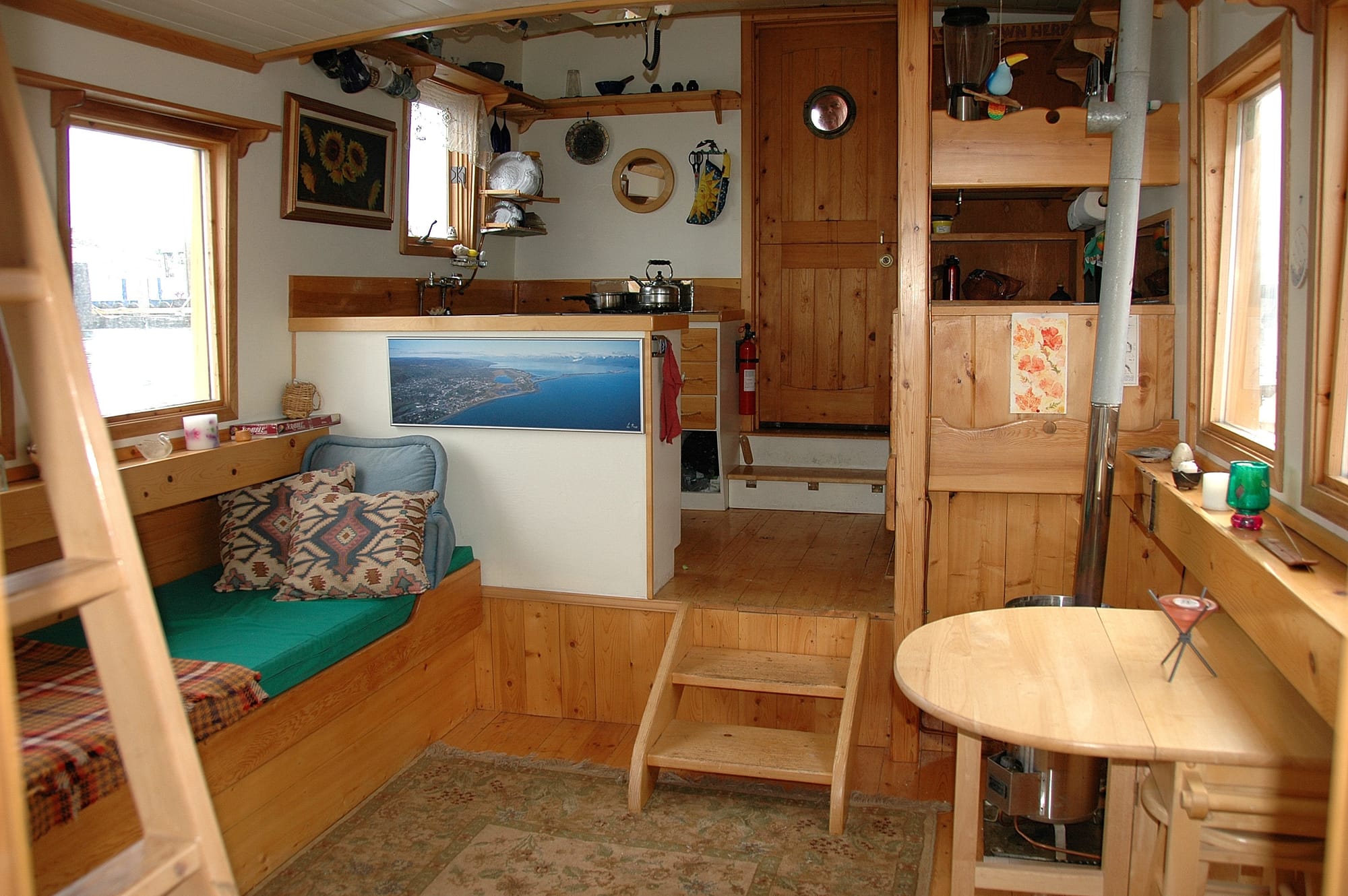
Birdwatchers planning a trip to Alaska can visit this link:
Learn more about cranes— visit these links:
Crane migrations:
Smithsonian and National Geographic
Crane species:
International Crane Foundation and Audubon
Sandhill crane profiles:
Audubon, National Geographic, and National Wildlife Foundation
Listen to the call of a sandhill crane at: The Cornell Lab
Read about the man who saves cranes:
_______________
Note to readers: This page contains Affiliate links from which I may earn a small commission.
Read Books on sandhill cranes: Amazon and
Crane Arts and Crafts:
If you’d like A ‘dancing crane’ (made of PVC) in your yard, check out:
For sandhill crane art, see: Amazon crane art